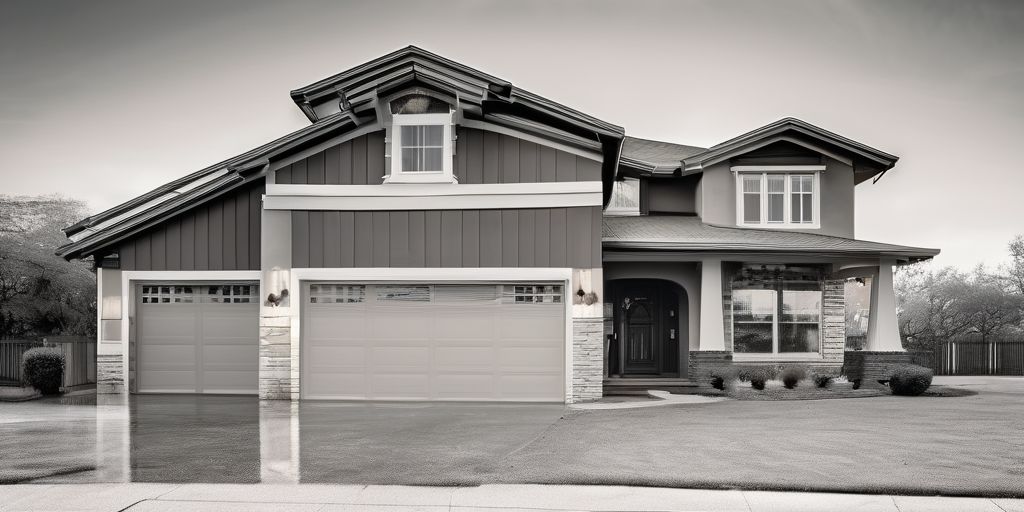Spray painting is a great way to get a smooth, professional finish on your projects. Whether you’re working on furniture, walls, or even cars, using a spray gun can save you time and effort. But to get the best results, you need to know the right techniques and take the necessary safety steps. This guide will help you understand the benefits of spray painting, how to prepare your surface, master the techniques, and troubleshoot common issues.
Key Takeaways
- Spray painting offers a smooth finish and is faster and more efficient than traditional methods.
- Proper surface preparation, including cleaning, sanding, and priming, is crucial for a professional finish.
- Using the right equipment and maintaining the correct distance and motion are key to mastering spray painting techniques.
- Safety gear and proper ventilation are essential to protect yourself and the environment.
- Troubleshooting common issues like paint drips and uneven coverage can save time and improve results.
Understanding the Benefits of Spray Painting
Spray painting offers numerous advantages that make it a popular choice for various projects. One of the key benefits is the ability to achieve a smooth finish that is difficult to replicate with traditional painting methods. This technique ensures an even coat with fewer drip marks, providing a professional look to any surface.
Achieving a Smooth Finish
- Even Coat: Spray painting creates a more even coat compared to rollers or brushes.
- Fewer Drip Marks: The technique minimizes drip marks, resulting in a cleaner finish.
- Professional Look: Achieve a high-quality, professional appearance on any surface.
Speed and Efficiency
Spray painting is known for its speed and efficiency, making it ideal for large projects. It covers large areas quickly, reducing the time and effort required.
- Faster Application: Covers large surfaces in less time.
- Less Effort: Requires less physical effort compared to traditional methods.
- Time-Saving: Ideal for projects with tight deadlines.
Versatility in Applications
Spray painting is versatile and can be used on various surfaces and materials. Whether you’re working on wood, metal, or plastic, spray painting provides excellent results.
- Multiple Surfaces: Suitable for wood, metal, plastic, and more.
- Various Projects: Ideal for furniture, vehicles, and home improvement tasks.
- Adaptable: Can be used for both small and large-scale projects.
By understanding the benefits of spray painting, you can determine if it aligns with the demands of your project. While it offers speed, finesse, and versatility, it requires proper preparation and technique to ensure a successful outcome.
Preparing Your Surface for Spray Painting
Cleaning and Degreasing
Before you start, make sure the surface is clean. Remove dirt, grease, and other contaminants. Proper preparation is crucial for a smooth finish. Use a mild detergent and water, then let it dry completely.
Sanding and Priming
Sanding helps create a smooth surface for the paint to stick to. Use fine-grit sandpaper to sand the area. After sanding, apply a primer to ensure better adhesion of the paint. This step is especially important for an exterior painter.
Filling Imperfections
Check the surface for any holes or cracks. Use a filler to fix these imperfections. Once the filler is dry, sand it down to make it even with the rest of the surface.
Remember, proper preparation and practice are crucial for achieving a smooth and uniform coat with a paint sprayer.
Mastering Spray Painting Techniques
Mastering spray painting techniques is essential for achieving a professional finish. Here are some tips to help you get started:
Choosing the Right Equipment
Selecting the right equipment is crucial. Using a high-quality sprayer can make a significant difference in your results. Look for sprayers with multiple spray patterns and powerful pressure to suit different projects.
Maintaining Proper Distance
Keeping the correct distance between the sprayer and the surface is vital. Aim to hold the sprayer about 6-12 inches away from the surface. This helps in achieving a smooth and even coat.
Using Correct Motion
Use a consistent, sweeping motion while spraying. Avoid stopping in one spot for too long to prevent paint drips and runs. Practice makes perfect, so take your time to get the motion right.
Remember, mastering these techniques can transform your spray painting projects from amateur to professional quality. Take your time, practice, and enjoy the process!
Safety and Environmental Considerations
Protective Gear and Ventilation
When spray painting, it’s crucial to wear the right protective gear. This includes:
- Masks or respirators to avoid inhaling harmful fumes
- Safety goggles to protect your eyes
- Gloves to keep your hands safe from chemicals
Proper ventilation is also essential. Make sure to work in a well-ventilated area to reduce the risk of inhaling toxic fumes. If you’re working indoors, use fans or open windows to improve airflow.
Safe Handling of Paints and Solvents
Handling paints and solvents with care is vital for your safety. Here are some tips:
- Store paints and solvents in a cool, dry place away from heat sources
- Always read and follow the manufacturer’s instructions
- Dispose of any waste materials properly to avoid environmental harm
Environmental Impact
Spray painting can have a significant impact on the environment. To minimize this, consider the following:
- Use environmentally friendly paints with low volatile organic compounds (VOCs)
- Be mindful of overspray, which can affect nearby plants and animals
- Clean your equipment regularly to prevent malfunctions and reduce waste
Remember, taking these steps not only helps protect the environment but also ensures a safer and more enjoyable painting experience.
By following these guidelines, you can achieve a professional finish while keeping safety and environmental considerations in mind.
Troubleshooting Common Spray Painting Issues
Spray painting is a versatile and efficient coating method, but like any technique, it’s an art form that requires precision, skill, and the right equipment. However, even the most experienced painters encounter common problems during the process. Understanding these common problems and knowing how to resolve them can help you complete the job smoothly and professionally.
Advanced Tips for Professional Results
Layering and Blending Colors
To achieve a stunning finish, focus on layering and blending colors. Start with a base coat and gradually add layers, allowing each to dry before applying the next. This technique helps in creating depth and richness in the color. Blending colors smoothly can be achieved by slightly overlapping each pass of the spray gun.
Using Sealants and Top Coats
Sealants and top coats are essential for protecting your paint job. They not only add a glossy finish but also shield the paint from wear and tear. Apply a clear sealant after the final color coat has dried. This step ensures durability and enhances the overall appearance. Remember to use a sealant compatible with your paint type to avoid any issues.
Maintaining Your Equipment
Proper maintenance of your spray painting equipment is crucial for consistent results. Clean your spray gun thoroughly after each use to prevent clogs and ensure smooth operation. Regularly check for any worn-out parts and replace them as needed. Keeping your equipment in top condition will help in reducing overspray and achieving a professional finish.
By integrating these essential practices, you pave the way for a polished, professional-grade finish. Armed with these insights, you’ll confidently navigate your project, equipped to conquer any obstacles that arise and achieve your desired results with assurance.
Want to take your painting skills to the next level? Check out our advanced tips for professional results! From prepping surfaces to mastering spray techniques, we’ve got you covered. Visit our website to learn more and see how we can help you achieve a flawless finish every time.
Conclusion
Spray painting can be a quick and effective way to get a smooth, professional finish on your projects. By understanding the basics, preparing your surfaces properly, and using the right techniques, you can avoid common problems and achieve great results. Remember to always prioritize safety and be mindful of the environment while working. Whether you’re a beginner or a seasoned pro, these tips and best practices can help you master the art of spray painting. So, grab your spray gun and start transforming your surfaces with confidence!
Frequently Asked Questions
What are the main benefits of spray painting?
Spray painting is fast and efficient. It helps you get a smooth finish and can be used on many different surfaces.
How should I prepare my surface before spray painting?
Start by cleaning and removing grease. Then, sand the surface and apply a primer. Fill any holes or cracks for a smooth finish.
What equipment do I need for spray painting?
You will need a spray gun, paint, and protective gear like masks and gloves. Make sure your spray gun is in good condition.
How can I avoid common problems like paint drips and runs?
Keep the spray gun at the right distance and use smooth, even motions. Practice on a scrap piece first to get the hang of it.
What safety measures should I take while spray painting?
Always wear protective gear and make sure your workspace is well-ventilated. Handle paints and solvents carefully to avoid accidents.
Can spray painting be environmentally friendly?
Yes, by using eco-friendly paints and proper disposal methods, you can reduce the environmental impact of spray painting.





